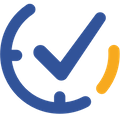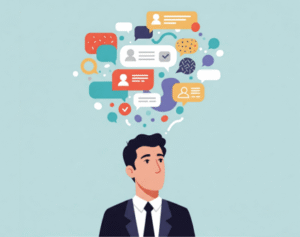Ever feel like you’re swimming in a sea of information, desperately trying to stay afloat? In today’s world of endless social media scrolling and information overload, mastering new skills can seem like climbing Mount Everest in flip-flops. But here’s the secret: we all have a hidden learning superpower waiting to be unleashed.
Welcome to the world of learning styles – your cheat code for leveling up your brain game. Ready to discover your unique learning style and change your study sessions from snooze fests to power hours? Let’s dive in!
Decoding Your Learning DNA
Think of learning styles as your brain’s preferred language. Some brains speak fluent “visual,” while others are fluent in “hands-on” or “listen-and-learn.” Your learning style is shaped by a mix of nature and nurture – your genes, life experiences, and even how you were taught as a kid all play a role.
So, how do you crack your learning code? Here are two easy ways:
1. Memory Lane Method: Think back to your most successful learning experiences. Was it when you doodled mind maps? Or maybe when you built that epic science project? Your past victories hold clues to your learning superpower.
2. Quiz Time: Take a learning style assessment online. These quick quizzes can give you insights into your brain’s favorite way of processing info.
Now, let’s explore the three main learning styles and discover how to supercharge each one!

The Visual Virtuoso
Are you the type who can recall exactly where that random fact was on the page? Do you love infographics and can’t resist a good chart? Congrats, you might be a visual learner!
Visual learners are like human cameras, capturing and storing information in vibrant mental snapshots. Their brains thrive on colors, patterns, and spatial relationships. If this sounds like you, try these visual learning hacks:
1. Mind Map Mastery: Ditch linear note-taking and embrace the power of mind maps. Use apps like MindMeister or go old-school with pen and paper to create colorful, branching diagrams that connect ideas visually.
2. Color-Coding Crusade: Unleash your inner artist! Use different colored highlighters or pens to categorize information. Turn your notes into a rainbow of knowledge that your brain will love to revisit.
3. Infographic Inspiration: Change boring lists into eye-catching infographics. Use tools like Canva to create stunning visuals that make complex ideas pop.
4. Metaphor Magic: Struggling with an abstract concept? Turn it into a visual metaphor. For example, imagine the water cycle as a never-ending roller coaster – it’ll stick in your mind much better than a dry textbook description.

The Audio Ace
Do you find yourself humming textbook facts to catchy tunes? Can you recite entire podcast episodes from memory? You might be an auditory learner – the person who learns best through their ears!
Auditory learners have an incredible knack for processing and retaining spoken information. Their brains are like high-fidelity recording studios, capturing every sound and turning it into lasting knowledge. If this resonates with you (pun intended), try these audio-boosting techniques:
1. Lecture Remixes: Record your classes or lectures, then create your own personal podcast series. Listen while you’re doing chores, commuting, or working out – multitasking at its finest!
2. Study Squad Goals: Form a study group and become the discussion leader. Explaining concepts out loud to others is like a turbo boost for your auditory learning engine.
3. Audio Textbooks: Swap traditional reading for audiobooks and educational podcasts. It’s like having a personal tutor whispering knowledge into your ears 24/7.
4. Verbal Rehearsal: Channel your inner news anchor and practice summarizing key points out loud. Bonus points if you can explain complex topics to your pet or a willing family member!

The Kinesthetic Ninja
Do you fidget during lectures but come alive during hands-on projects? Does your brain seem to work better when your body’s in motion? Welcome to the world of kinesthetic learning!
Kinesthetic learners are the ultimate “doers.” They absorb information best when they can touch, move, and experience concepts firsthand. Their brains are wired to learn through action and interaction. If this sounds like your style, try these kinesthetic-friendly strategies:
1. DIY Learning Lab: Turn your study space into a mini-laboratory. Build models, create flashcards you can physically manipulate, or use building blocks to represent abstract ideas.
2. Role-Play Revolution: Why just read about history when you can live it? Organize role-playing sessions with friends to act out historical events or scientific processes. It’s like cosplay for your brain!
3. VR Study Sessions: Dive into virtual reality learning experiences. Many educational VR apps let you explore ancient civilizations, dissect virtual organisms, or manipulate 3D molecular structures – all from the comfort of your living room.
4. Field Trip Frenzy: Take your learning out into the real world. Visit museums, conduct experiments in nature, or shadow professionals in your field of study. Real-world experiences create lasting neural connections.

Here’s the ultimate learning hack that works for every style: make it matter to you. When you connect what you’re learning to your passions, goals, and real-life applications, your brain switches into high gear. Ask yourself: “Why does this matter to me? How can I use this knowledge in my life or future career?” Learning isn’t about cramming facts into your brain – it’s about embarking on an exciting journey of discovery.




